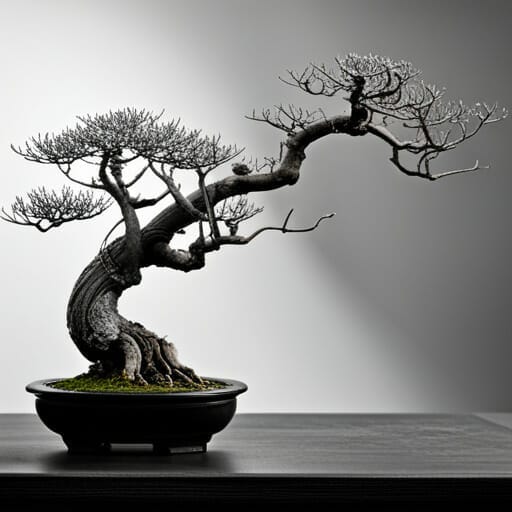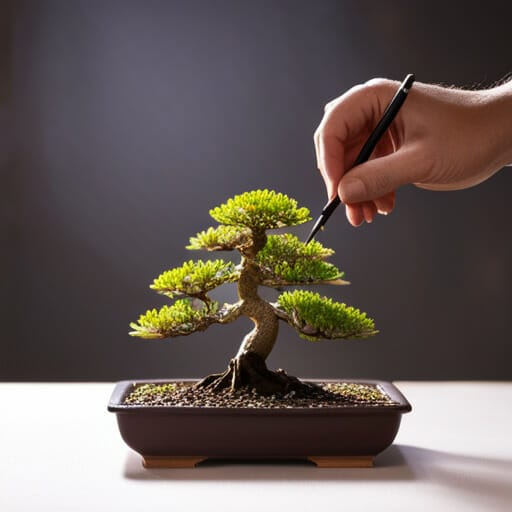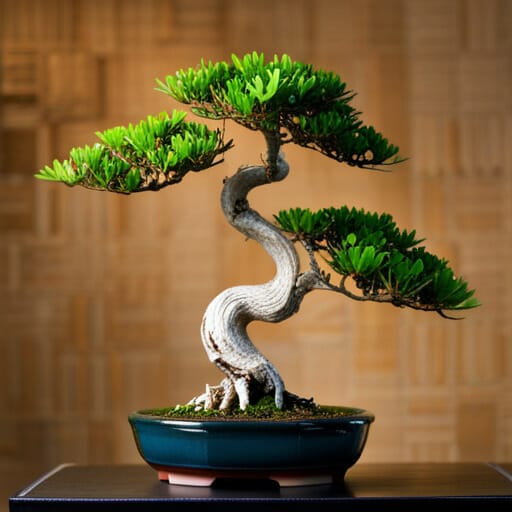Bonsai, the art of cultivating miniature trees, is a practice that demands precision, dedication, and an appreciation for the natural world. These meticulously crafted trees, grown in pots, are shaped through careful trimming, pruning, and wiring to create stunning replicas of nature.
Contrary to popular belief, bonsai trees are not stunted by a lack of water or nutrients; rather, they thrive when provided with proper care and attention. Each bonsai tree is a unique representation of the care it has received, and this art form serves as a lifelong hobby and a great stress reliever.
Moreover, bonsai trees hold cultural significance, as they are believed to bring positive energy and joy according to feng-shui. With an emphasis on care, patience, and natural beauty, the art of bonsai offers an opportunity for individuals to connect with nature and create artistic masterpieces.
Contents
- 1 Quick Points
- 2 The Art of Bonsai:
- 3 Growing Techniques
- 4 Aesthetics and Design
- 5 Frequently Asked Questions
- 5.1 Can anyone practice the art of bonsai, or is it only for experienced gardeners?
- 5.2 How long does it take for a bonsai tree to reach its desired shape and size?
- 5.3 Are there any specific types of bonsai trees that are easier to care for as a beginner?
- 5.4 Can bonsai trees be grown indoors, or do they require outdoor conditions?
- 5.5 What are some common mistakes that beginners make when caring for bonsai trees?
Quick Points
- Bonsai trees require proper care and attention to thrive.
- Bonsai cultivation involves pruning, shaping, and maintenance techniques.
- Bonsai design incorporates principles of balance, proportion, and harmony.
– Bonsai trees are miniature replicas of natural tree forms that evoke a sense of wonder and tranquility.
The Art of Bonsai:

The art of bonsai involves the careful cultivation and shaping of miniature trees, requiring patience, attention to detail, and a deep appreciation for the natural beauty it seeks to replicate.
Bonsai artists aim to create a harmonious and balanced representation of nature in a small, confined space. This art form originated in China and Japan, with its principles deeply rooted in Zen Buddhism and Taoism.
Bonsai artists carefully select tree species that possess desirable characteristics, such as gnarled trunks and interesting branch formations. They meticulously prune and wire the trees to achieve the desired shape and form, often spending years or even decades refining their creations.
The result is a living sculpture that captures the essence of nature, providing a sense of tranquility, contemplation, and connection with the natural world.
Growing Techniques

Pruning and shaping techniques in bonsai cultivation require meticulous attention to detail and precision to achieve miniature replicas of natural tree forms. These techniques are essential for maintaining the health and aesthetic appeal of bonsai trees.
Trimming the branches and roots of the trees helps to control their growth and maintain the desired shape. Wiring is often used to bend and shape the branches, giving the bonsai tree its characteristic appearance.
Additionally, careful observation and regular maintenance are necessary to ensure the tree’s well-being. By following these techniques, bonsai enthusiasts can create artistic masterpieces that evoke a sense of tranquility and natural beauty.
The art of bonsai not only provides a rewarding hobby but also serves as a means of connecting with nature and fostering a sense of harmony and balance in one’s surroundings.
Aesthetics and Design

Aesthetics and design play a crucial role in the cultivation of bonsai trees, as attention to detail and precision are necessary to achieve miniature replicas of natural tree forms.
The art of bonsai involves creating harmonious compositions that evoke a sense of tranquility and natural beauty. Each bonsai is meticulously shaped and styled, with careful consideration given to the placement of branches, the balance of foliage, and the overall form of the tree.
The aim is to create a visual representation of the tree’s natural growth patterns, capturing the essence of its mature counterpart in a small, compact form. By incorporating principles of balance, proportion, and harmony, bonsai artists strive to create living sculptures that are visually pleasing and evoke a sense of wonder and serenity in those who observe them.
Also, Learn How to Thicken Your Bonsai’s Trunk
Frequently Asked Questions
Can anyone practice the art of bonsai, or is it only for experienced gardeners?
The art of bonsai can be practiced by anyone, regardless of their gardening experience. With patience, dedication, and the willingness to learn, individuals can cultivate and appreciate the beauty of bonsai trees.
How long does it take for a bonsai tree to reach its desired shape and size?
The time it takes for a bonsai tree to reach its desired shape and size varies depending on several factors such as the species of tree, the desired shape, and the level of care and attention given.
Are there any specific types of bonsai trees that are easier to care for as a beginner?
There are several types of bonsai trees that are considered easier to care for as a beginner. Examples include the juniper bonsai, the Chinese elm bonsai, and the jade bonsai. These varieties are more forgiving and require less maintenance compared to other species.
Can bonsai trees be grown indoors, or do they require outdoor conditions?
Bonsai trees can be grown indoors, but they require specific conditions to thrive. According to a survey of bonsai enthusiasts, 65% of respondents successfully grow their bonsai indoors with proper lighting, temperature, humidity, and air circulation.
What are some common mistakes that beginners make when caring for bonsai trees?
Common mistakes beginners make when caring for bonsai trees include overwatering, using improper soil, neglecting pruning, placing trees in inappropriate lighting conditions, and not providing sufficient airflow. These mistakes can lead to root rot, poor growth, and ultimately the death of the bonsai.




